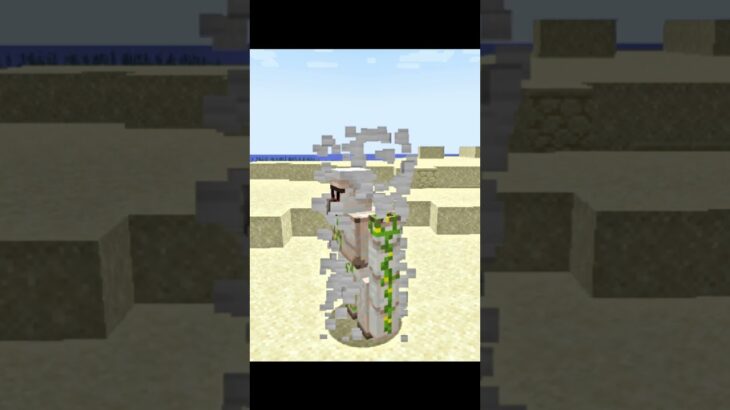『マインクラフト』は、マルチプレイヤー対応のシミュレーションゲームです。ゲーム内で建築や探索を楽しむことができますが、さらに拡張して遊ぶことができるのが『マインクラフト』の魅力です。
その拡張方法の1つが「Mod(モッド)」です。Modとは、ゲーム内の様々な要素を追加、変更、または強化するプログラムのことです。Modはプレイヤーが導入することで、より多様なゲーム体験を楽しむことができます。
今回紹介するのは、「クールなMod」の第42弾です。これは、「Minecraft」の遊び方を変えることができるModを紹介するシリーズです。
今回紹介するModは、YouTubeのショートビデオであり、非常に短くコンパクトなものです。このように簡潔な動画形式でModを紹介することで、プレイヤーは手軽に新しいModを発見し、導入して楽しむことができます。
「クールなMod」は、ゲーム内の様々な要素を改善するためのModを紹介しています。Modによって、建築や探索、クラフト、戦闘など、様々な要素が楽しめるようになります。
このシリーズを通じて、より多様なModを知ることで、より楽しい遊び方を見つけることができます。ぜひチェックしてみてください!

The quiet hum of the early morning enveloped the small town, as the first rays of sunlight began to stretch across the sky, turning the clouds into a soft palette of pink and orange hues. It was a tranquil scene, one that could easily be missed by those rushing through their lives, constantly preoccupied with their daily routines and obligations. But for the few who chose to pause and take in the beauty of the moment, it was a reminder of the stillness and serenity that the world often offers when one slows down enough to notice. The town itself, a mixture of old, brick buildings and newly constructed homes, seemed to mirror the delicate balance between progress and preservation. On one hand, there was the hustle and bustle of the modern world, with its ever-advancing technology and rapidly changing society. On the other, there was the comfort of tradition, where familiar faces greeted each other in the town’s local bakery, where stories were exchanged over cups of coffee, and where the sound of a passing train could still be heard echoing through the streets in the afternoon. For many of the town’s inhabitants, it was the simple things that mattered most: the warmth of a homemade meal, the joy of a conversation with a long-lost friend, or the sense of peace that came with watching the seasons change. Despite the modern advancements in the world, the town remained a place where time seemed to slow down, allowing people to reconnect with one another and with the land. It wasn’t that the people here were stuck in the past or resistant to change—they simply understood that there was value in maintaining the things that truly mattered, even as the world around them evolved. This balance, delicate as it was, was something that had been passed down through generations. It was in the way the older members of the community would sit on their porches and wave to passing strangers, in the way the younger ones would lend a hand to their neighbors without hesitation, and in the quiet understanding that, no matter how fast the world moved, there was always room for kindness and connection. Yet, even in this idyllic setting, there were signs of change. The local store had recently been replaced by a chain supermarket, and the old library, with its creaky wooden floors and rows of dusty books, had closed its doors after being replaced by an online subscription service. There were whispers about a new development project on the outskirts of town—an upscale housing complex and shopping center that would bring in more traffic, more people, and more businesses. It was a mixed bag of excitement and concern. Some saw it as an opportunity for the town to grow and modernize, to become a place where new opportunities could thrive. Others feared that it would disrupt the very essence of what made the town special—the slower pace, the deep sense of community, and the simple pleasures that couldn’t be replicated in a bustling metropolis. The debate raged on in the local diner, with townspeople divided between the promise of progress and the nostalgia for days gone by. As the seasons continued their dance of change, so too did the hearts and minds of the people living in this small corner of the world. They knew that the future was inevitable, that nothing stayed the same forever, but they also understood the importance of holding on to the things that gave their lives meaning. And so, life in the town went on, with moments of joy and sorrow, laughter and tears, and the quiet realization that the more things changed, the more they stayed the same. People still gathered for community events, still found solace in the quiet of the countryside, and still looked out for one another in times of need. The contrast between old and new, past and future, was what made this place unique. It was a reminder that, even in the face of inevitable change, there was beauty to be found in preserving the traditions and values that had stood the test of time. In the end, it wasn’t the buildings or the advancements in technology that defined the town—it was the people, the relationships they cultivated, and the sense of belonging that made it home. The sun rose higher in the sky, casting its golden light on the streets, the fields, and the people who called this place their own. There would be challenges ahead, no doubt, but for now, there was peace in knowing that, no matter what the future held, the heart of the town would remain unbroken. And so, as the day unfolded, the people of the town carried on with their lives, grateful for the simple things, aware of the changes around them, and yet, ever so hopeful for what the future might bring. It was this hope, rooted in the strength of their community and the richness of their shared history, that would carry them through whatever lay ahead.